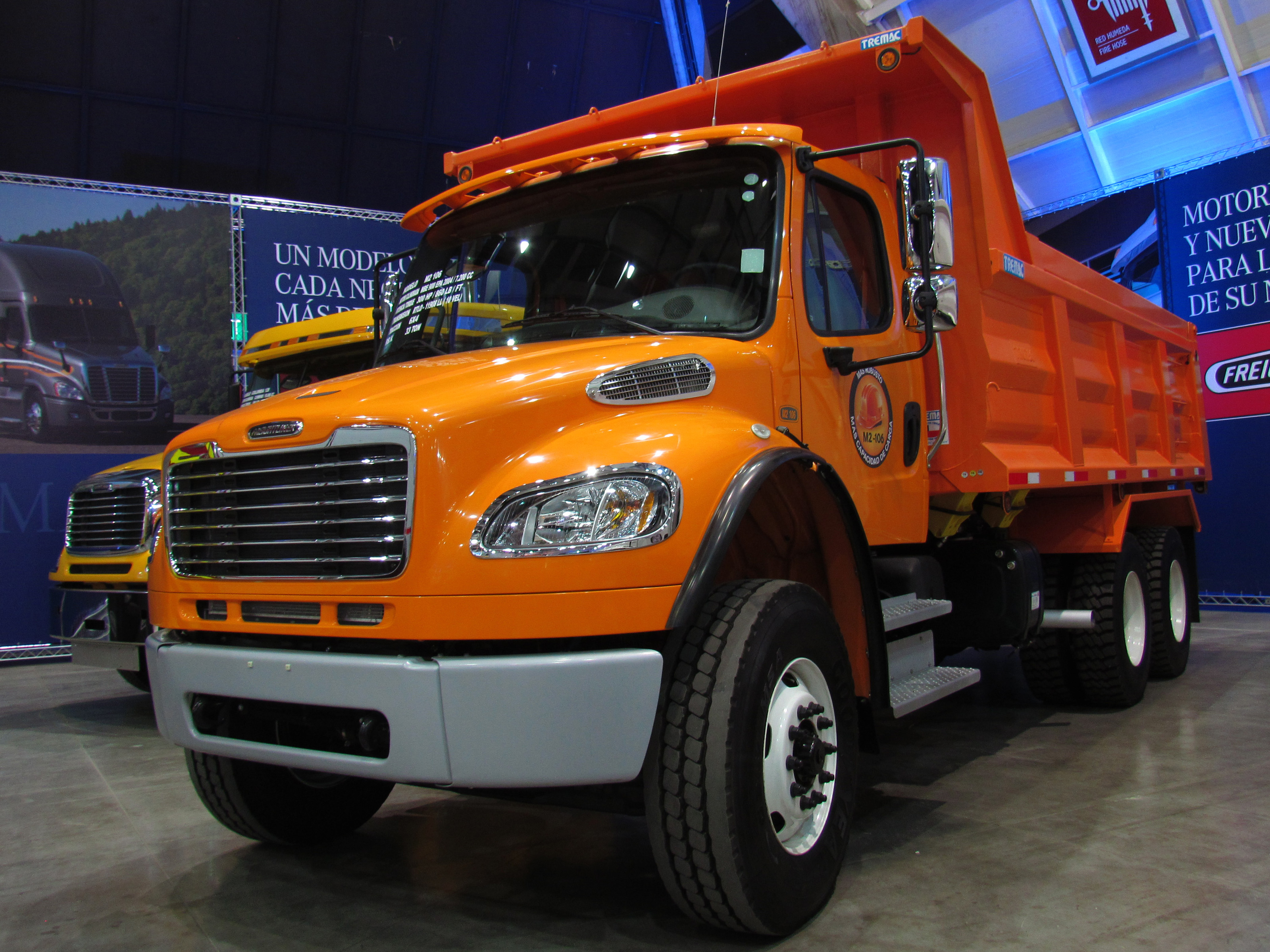
Truck
A truck or lorry is a motor vehicle designed to transport freight, carry specialized payloads, or perform other utilitarian work. Trucks vary greatly in size, power, and configuration, but the vast majority feature body-on-frame construction, with a cabin that is independent of the payload portion of the vehicle. Smaller varieties may be mechanically similar to some automobiles. Commercial trucks can be very large and powerful and may be configured to be mounted with specialized equipment, such as in the case of refuse trucks, fire trucks, concrete mixers, and suction excavators. In American English, a commercial vehicle without a trailer or other articulation is formally a "straight truck" while one designed specifically to pull a trailer is not a truck but a "tractor".[1]
"Trucks" and "Lorry" redirect here. For other uses, see Truck (disambiguation) and Lorry (disambiguation).The majority of trucks currently in use are powered by diesel engines, although small- to medium-size trucks with gasoline engines exist in North America. The market-share of electrically powered trucks is growing rapidly, expected to reach 7% globally by 2027, and are already in service in various roles.[2] In the European Union, vehicles with a gross combination mass of up to 3.5 t (3.4 long tons; 3.9 short tons) are defined as light commercial vehicles, and those over as large goods vehicles.
Operations issues
Taxes
Commercial trucks in the US pay higher road use taxes on a state level than other road vehicles and are subject to extensive regulation.[110] A few reasons commercial trucks pay higher road use taxes: they are bigger and heavier than most other vehicles, and cause more wear and tear per hour on roadways; and trucks and their drivers are on the road for more hours per day. Rules on use taxes differ among jurisdictions.
Damage to pavement
The life of a pavement is measured by the number of passes of a vehicle axle. It may be evaluated using the Load Equivalency Factor,[111] which states that the damage by the pass of a vehicle axle is proportional to the 4th power of the weight, so a ten-ton axle consumes 10,000 times the life of the pavement as a one-ton axle. For that reason, loaded trucks cost the same as thousands of cars in pavement costs, and are subject to higher taxes and highway tolls.[38][39]